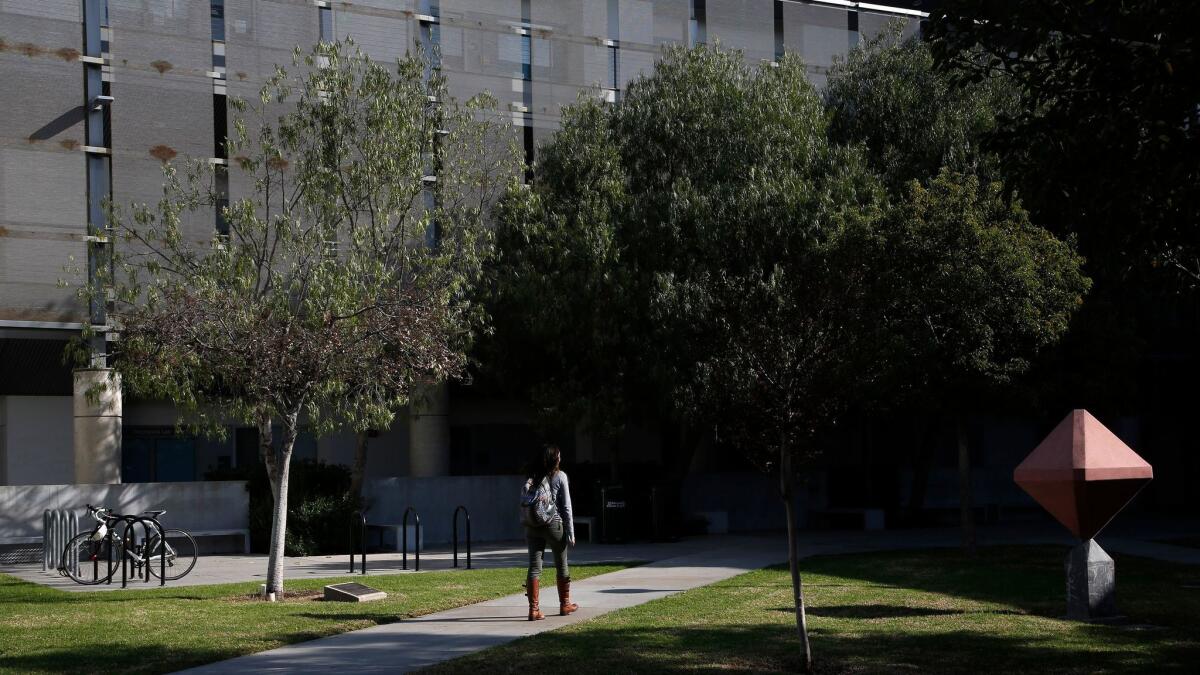Remedial classes might be the biggest roadblock to success for community college students

The vast majority of California community college students take remedial math and English classes — but that college-prep work is largely failing to help most of them complete their academic or vocational programs.
Eight of 10 community college students first are placed in remedial classes to gain college-level skills before moving to courses that count for credit. But only 16% of those students earn a skills certificate or two-year degree within six years, and just 24% transfer to a four-year university, according to a study by the Public Policy Institute of California.
In fact, remedial courses — also called developmental education — may drive students to drop out because they add time and cost to academic programs while not necessarily being relevant to them, the study found.
“In its current form, developmental education may be one of the largest impediments to success in California’s community colleges,” the study said.
However, it noted that state educators have begun to launch reforms — and legislators are boosting spending for them.
California Community Colleges is the nation’s largest system of higher education, with 2.1 million students at 113 campuses.
Olga Rodriguez, a co-author of the study, said one problem with the current system was that some students were mistakenly placed in remedial classes. Most campuses long have relied almost exclusively on standardized test scores for those placements, but research by Columbia University and others has found the exams poorly predict college success.
As a result, many colleges are changing their placement process — for instance, allowing a student with a high school GPA of at least 2.6, or a B-, to bypass remediation regardless of standardized test scores. Latino and African American students, who are over-represented in remedial classes, stand to reap the largest benefits.
When Butte College expanded access to college-level English courses, 40% of students who would have been placed in remediation earned A’s and B’s. Black and Latino students — who had fared the worst under the previous placement process — more than doubled their completion of college English, according to the California Acceleration Project, a network led by state community college faculty.
Another issue is that most campuses require as many as four remediation courses before students can enroll in college-level classes — a long and costly road that drives many to drop out, researchers said. The study found that only 44% of students completed the math sequence and 60% completed the English sequence.
“The traditional multicourse sequences happening at all colleges across the system is leading to a lot of students dropping off their trajectory,” Rodriguez said.
But the Public Policy Institute study found that two-thirds of the campuses have redesigned their remediation education in recent years to help students make faster progress.
Some have compressed elementary and intermediate algebra into a single course. Others have expanded flexibility — allowing those not heading into math-based fields to learn statistics rather than algebra.
Another experiment in California and elsewhere involves placing students in the remedial and college-level courses at the same time. Results from five states showed that those students more than doubled their course completion rates to 60% in half the time or better, the report noted.
State legislators are backing the reforms with bucks, giving nearly $500 million to community colleges last year for remedial education.
However, Rodriguez said, only 8.3% of all students have enrolled in the redesigned courses. She also cautioned that more research was needed to see what actually works among the flurry of reforms.
Twitter: @TeresaWatanabe
More to Read
Sign up for Essential California
The most important California stories and recommendations in your inbox every morning.
You may occasionally receive promotional content from the Los Angeles Times.











